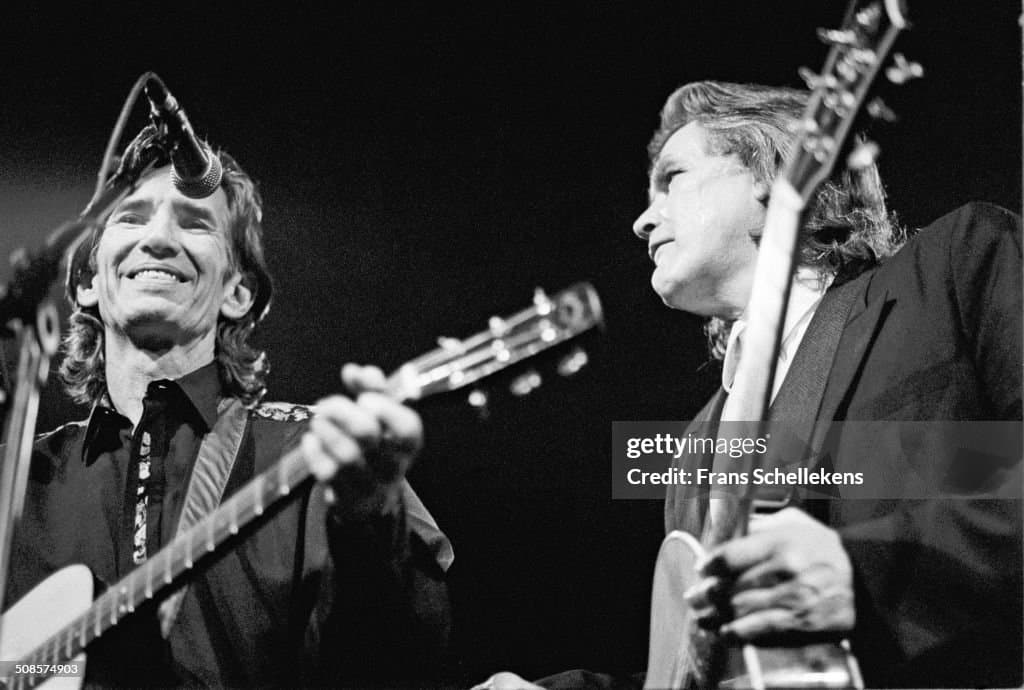
The Sweet, Fleeting Hope of Trading the Wanderer’s Curse for a Quiet Harbor
There are few songs in the vast, melancholy catalog of Townes Van Zandt that dare to hint at a possibility of grace, a fleeting vision of redemption, and “No Lonesome Tune” is one of those rare, heartbreaking gems. Originally released on his seminal 1972 album, The Late Great Townes Van Zandt, the song, like much of Townes’s work, was a masterclass in profound folk songwriting that existed outside the orbit of the major commercial charts. It was not a Billboard hit, but its cultural currency among singer-songwriters—and among the faithful who understood the weight of his words—far outweighs any chart position. Its enduring quality is only amplified by the shared stage light it would later enjoy in performances with his soul-brother in song, Guy Clark, as captured on various live recordings, a testament to the communion between these Texas titans.
The story behind “No Lonesome Tune” is less about a single dramatic event and more about the eternal yearning that defines the wandering life. Townes Van Zandt himself was the consummate high-roller and rambling man, perpetually on the road, often battling inner demons and the wreckage of his own making. This song acts as a crucial pause in that long journey, a moment where the narrator—clearly a proxy for Townes—looks back from the brink of perpetual motion and resolves to seek a stable harbor. He has “wasted his time in the search for a sign,” spent his life on “old black riverboats” and in “pool halls,” and now, exhausted, he sees a vision of escape. This narrative thread is what hooks the older reader: the painful recognition that a life of unbridled freedom often exacts the heaviest toll when one is finally too weary to pay it.
The meaning of “No Lonesome Tune” is an almost impossible wish for a life free of the narrator’s intrinsic sorrow, an attempt to trade the “lost high roller” identity for domestic peace. He’s determined to go home, to return to the “sweetest girl around,” believing her presence is the key to silencing the internal noise that has driven him for so long. The hope he expresses is beautifully poignant, even naive, especially for a songwriter whose work usually dwells in the deepest trenches of despair.
But the real, gut-wrenching moment of truth—the lyrical masterpiece that makes this song unforgettable—arrives in the final verses, where the hopeful resolve cracks open to reveal a vulnerability almost too great to bear. Gazing at his baby boy, the narrator is overcome by a moment of clarity and sheer, agonizing love, wondering, “Will his life be like mine?” All he wants is a way to “take his load,” to shield the next generation from his own cursed path. The concluding sentiment, where he imagines his breath turning to “melody” and his worries falling away like “rain,” is a gorgeous, almost spiritual image of the tranquility he dreams of, yet one suspects he knows in his heart is unattainable. The sweet melody of this tune—a rare burst of major-key warmth—serves only to make the underlying tragedy more acute. It’s a moment of clarity so bright it hurts, a desperate prayer for simple, unheroic contentment that the gods of outlaw country rarely grant.
This song is the sound of a man standing at a crossroads, knowing that one path leads back to the familiar, destructive dark, and the other—the path of simple, quiet love—is one he is likely too broken to walk. It is a melody of longing, not quite lonesome, but certainly heavy with the shadow of what might have been.